Intiutively, I’ve come to learn that large teams and small teams are better at achieving different outcomes—the situation often determines what size of team is best suited. I’ve never quite had the words to do this idea justice, but after some research I came across a paper in Nature that perfectly captures (and uses data to analyse) the differences between large and small teams.
The paper, “Large teams develop and small teams disrupt science and technology” by Lingfei Wu, Dashun Wang and James A Evans, analysed over 65 million academic papers, patents and software products.
The analysis revealed that “smaller teams disrupt … with new ideas and opportunities, whereas larger teams have tended to develop existing ones”. Larger teams build on more recent and popular ideas, and make an immediate impact. Smaller teams search more deeply into the past and use less popular ideas—they are more disruptive and succeed further into the future (if at all).
Interestingly they found that team size was the key determining factor in the types of ideas and outcomes teams created.
The rest of this post provides:
- A summary of the differences between small and large teams
- Key Insights
- As teams grow they produce less disruptive outcomes
- Small teams produce disruptive outcomes (or none at all)
- Larger teams build upon recent, popular ideas
- Small teams go deeper with less popular ideas
- Larger teams have more immediate, popular impact
- Small teams produce less popular, but more durable work
- Small, disruptive teams less likely to be funded
Summary of Differences Between Small and Large Teams
The table below summarises the differences between small and large teams found by the analysis:

Key Insights
Here are the key insights from the paper for tech and product teams:
As teams grow they produce less disruptive outcomes
After the addition of the first few members, the team’s ability to develop disruptive new ideas declines sharply. “As teams grow from 1 to 50 team members, their papers, patents and products drop in percentiles of measured disruption by 70, 30 and 50, respectively.”
In the following chart from the paper, you can see disruptiveness versus team size:
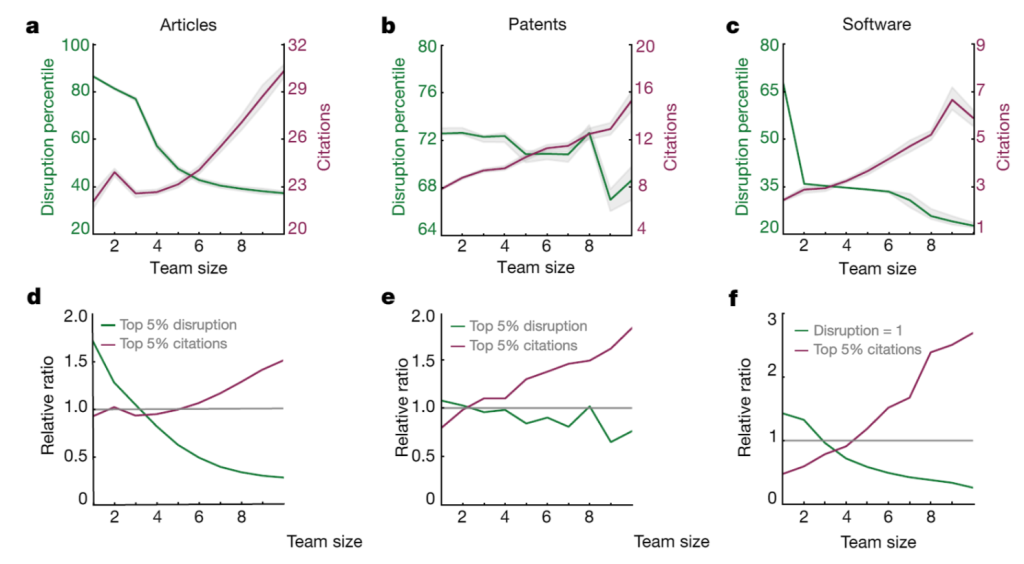
The researchers looked at a variety of possible causes for why the disruptiveness of the team changed, and the primary factor that emerged was team size.
Small teams produce disruptive outcomes (or none at all)
Here are another two charts that illustrate how smaller teams are more disruptive. The first shows how small teams are relatively more likely to obtain nobel prizes.
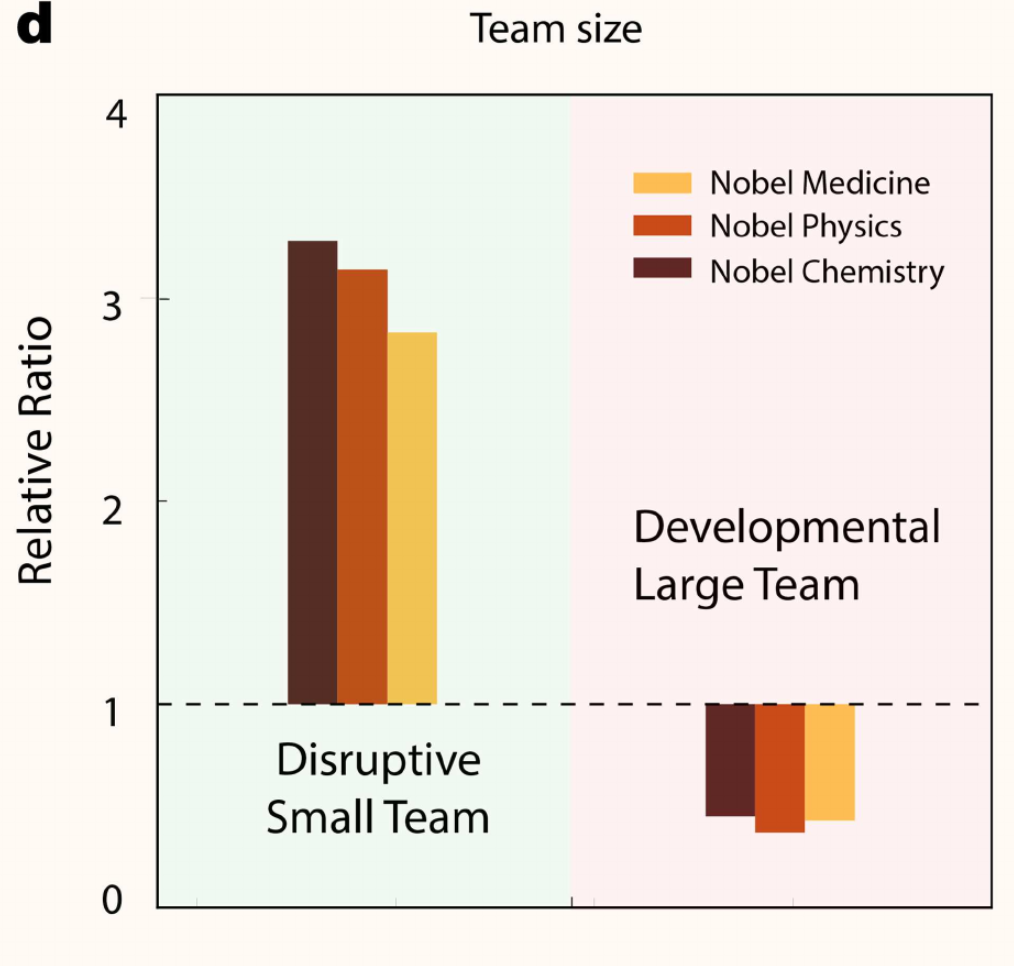
This next one zooms in on disruption in open source software projects with disruptiveness along the Y axis (left) and team size along the X axis (bottom).
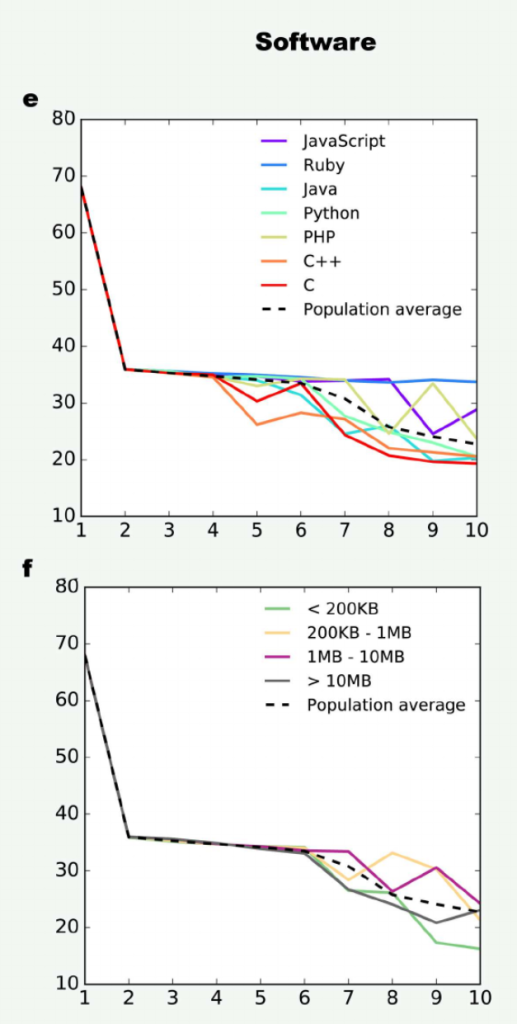
One man bands are much more likely to be disruptive. Then, you can see a sharp decline in disruptiveness once a second team member is added. After the second team member, disruptiveness is relatively flat, only declining slightly with each new member. When the 6th or 7th team member is added, disruptiveness declines sharply again.
However, smaller teams are also more likely to have no impact.
Larger teams build upon recent, popular ideas
Larger teams tend to choose more recent, popular ideas to base their work on. The paper found this by looking at the age and popularity of the research articles or software repositories that teams of different sizes referenced.

You can see in the charts above, particularly in the academic articles and software, that larger teams were much more likely to reference and build upon newer and more popular work.
This makes sense intuitively. It is harder to convince many people of a new idea, so it’s easier to work with ideas that are already accepted.
Small teams go deeper with less popular ideas
Using the same analysis of the number of references teams made to others’ work, and the popularity of what was referenced, the research found that small teams draw upon older, less popular ideas.
A small team of disruptive software developers (say 1-3 people) would reference work almost 2-3 times older than the work that larger teams would reference. And the work this team referenced was almost half as popular as that referenced by larger teams.
Larger teams have more immediate, popular impact
Large teams have an immediate impact. One of the ways the analysis shows this is through a chart that depicts citations (the number of times other academics refer back to the teams output). In the chart below, you can see how the number of citations grows with team size.
Citations = red line, disruptiveness = green line.
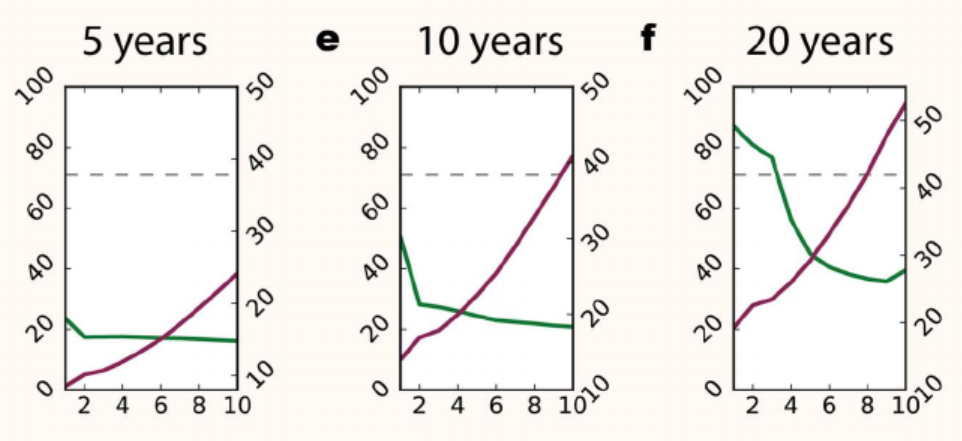
This aligns with research referenced in the paper, which says that large article and patent teams receive more citations.
Small teams produce less popular, but more durable work
Smaller teams tend not to produce work that is as popular as larger teams in the short term. However, work that does cut through is likely to last longer. When combined with the disruptiveness of a small team, this makes for high impact, long lasting ideas. The chart below shows the citation delay for small and disrupting teams.
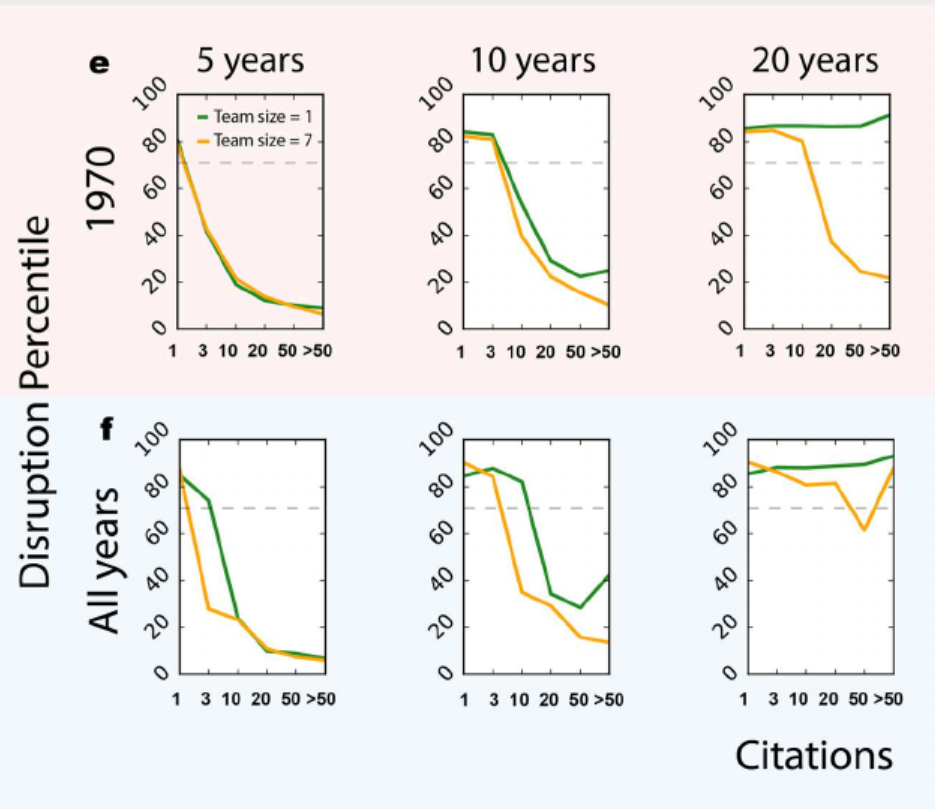
Small, disruptive teams are less likely to be funded
The analysis focused on the grants associated with published academic papers from small, disruptive teams versus large developmental teams. The data shows that grant funding hasn’t been a significant driver of disruptive work for small teams, given that they are less likely to have received it. Grant funding seems to help large teams develop existing ideas.
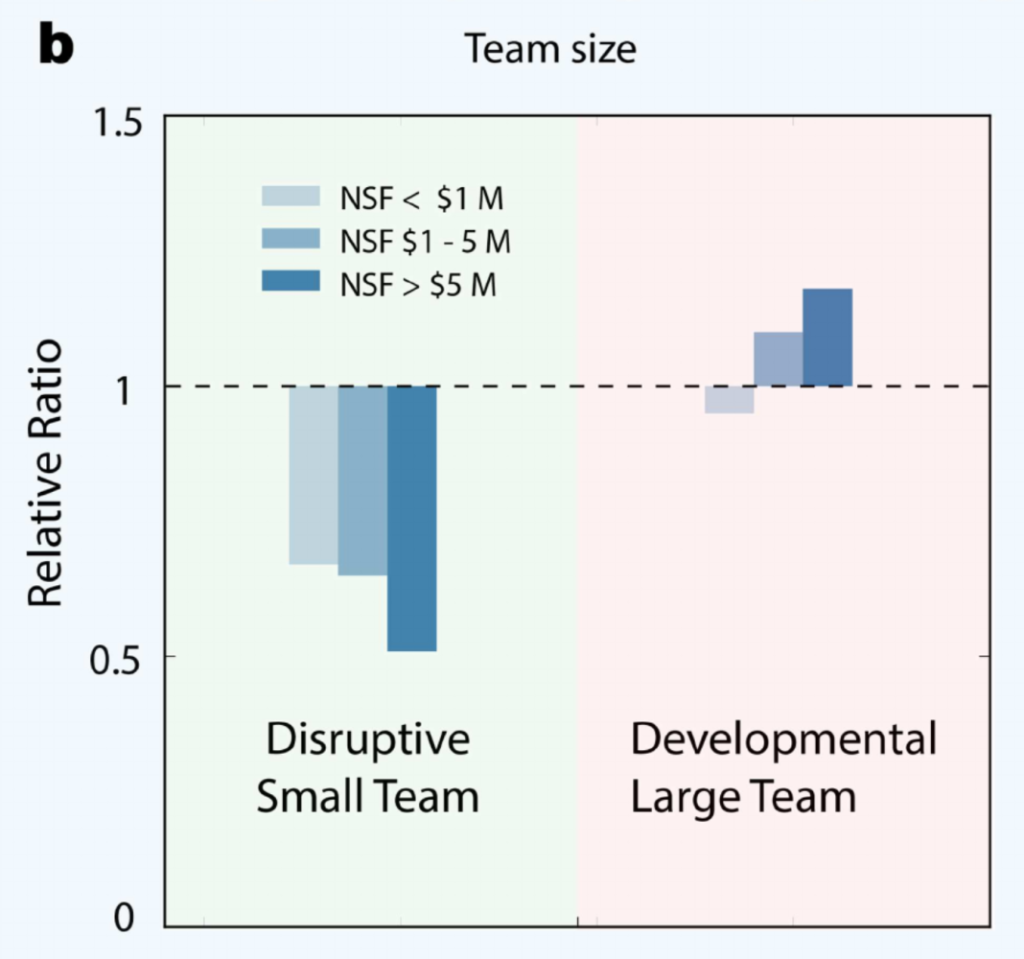
Additional reading:
- “Large teams develop and small teams disrupt science and technology” by Lingfei Wu, Dashun Wang, and James A Evans
- “When small teams are better than big ones“

Scott Middleton
CEO & Founder
Scott has been involved in the launch and growth of 61+ products and has published over 120 articles and videos that have been viewed over 120,000 times. Terem’s product development and strategy arm, builds and takes clients tech products to market, while the joint venture arm focuses on building tech spinouts in partnership with market leaders.
Twitter: @scottmiddleton
LinkedIn: linkedin.com/in/scottmiddleton